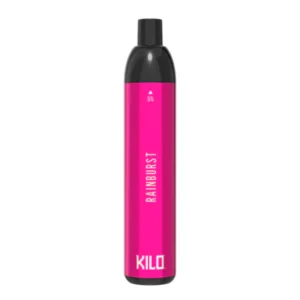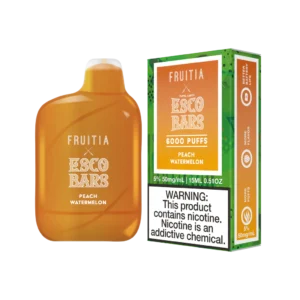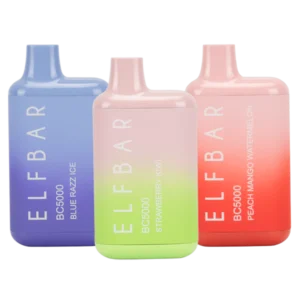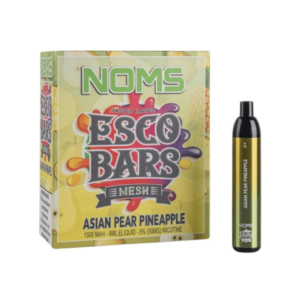

CBD for Pain Management: A Natural Path to Relief
Diving into the world of CBD for pain management can feel like navigating a new city without a map. But the core idea is refreshingly simple: a lot of people are searching for natural ways to find comfort, and cannabidiol (CBD) has emerged as a friendly guide due to the way it partners with your body’s own systems. This guide will be your compass, clearing the fog and lighting up the path forward.
Your Journey to Understanding Natural Pain Relief
The buzz around CBD isn’t just noise. It signals a real shift in how we approach wellness, with more and more of us seeking solutions that feel in sync with our bodies. If you’re tired of the usual options and curious about what else is out there, you’re in the right place. We’ll explore the essentials without the dense scientific jargon, making the concepts behind CBD for pain easy and approachable.
Consider this your first step on an informed journey. Our goal is to demystify CBD, showing you not just what it is, but how it’s being used for pain in a way that feels both practical and empowering.
The Body’s Internal Control Center
To understand how CBD works, we first need to appreciate an amazing system inside all of us: the endocannabinoid system (ECS). Picture the ECS as your body’s master control center or internal thermostat. Its primary job is to keep everything in balance—a state scientists call homeostasis.
The ECS plays a key role in managing several vital functions, including:
- Pain sensation and how we perceive it
- Inflammation responses
- Mood and emotional balance
- Sleep patterns and quality
When you experience pain—whether from an old injury, a chronic condition, or even post-surgery—it’s your body signaling that something is out of balance. The ECS immediately gets to work, releasing its own cannabinoid-like chemicals (called endocannabinoids) to help soothe the situation and restore equilibrium.
CBD is a plant-based compound that doesn’t just barge in and take over. Instead, it seems to support and nudge the ECS, helping it perform its balancing act more effectively. It’s less of a sledgehammer and more of a helpful collaborator.
A Natural Ally for Your Wellness Journey
This cooperative role is where CBD for pain management truly shines. As a non-psychoactive compound from the hemp plant, it won’t cause a “high.” Instead of forcefully binding to your ECS receptors like a key in a lock, CBD appears to have a more subtle, indirect influence.
It seems to encourage your body to make better use of its own endocannabinoids and also interacts with other bodily receptors involved in pain and inflammation. This gentle, supportive approach is precisely why so many people are drawn to it. They’re seeking relief that feels natural, not aggressive.
As we continue, we’ll explore this process in more detail, look at the diverse world of products available, and cover how to approach dosing safely. Let’s start this journey together, one clear step at a time.
How CBD Interacts with Your Body’s Pain Signals
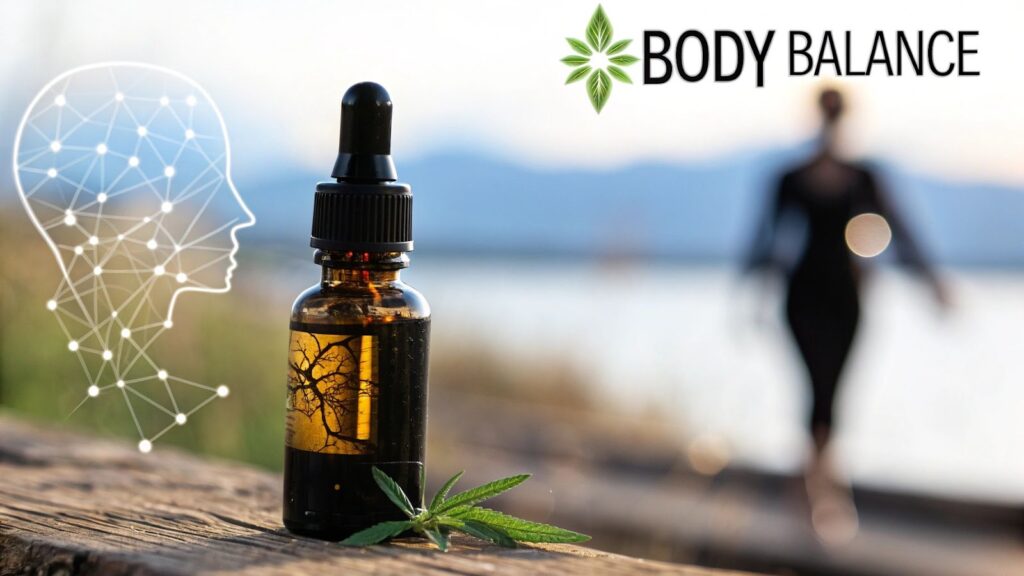
To truly grasp how CBD can help with pain, you just have to understand the amazing communication network already built into your body. No biology textbook needed; a simple analogy will do. Picture your body as a complex, finely-tuned orchestra. The conductor of this orchestra is the endocannabinoid system (ECS).
The ECS is essentially the master regulator, working tirelessly behind the scenes to maintain balance, or what scientists call homeostasis. It has a hand in just about everything—your mood, appetite, immune response, and, crucially for our conversation, your perception of pain.
When you feel pain, whether it’s a sharp sting or a dull, chronic ache, your ECS is the first responder. It sends out its own natural chemical messengers to the source of the trouble, trying to manage the situation and bring your body back to a state of equilibrium.
CBD: The Assistant Conductor
This is where CBD steps onto the stage. Unlike many conventional pain relievers that might silence an instrument or rewrite the musical score entirely, CBD acts more like a skilled assistant conductor. It doesn’t take over the orchestra; it helps the musicians already there play their parts better.
CBD gently interacts with the ECS, mainly by influencing two key types of receptors: CB1 and CB2.
- CB1 receptors are concentrated in your central nervous system—your brain and spinal cord. They play a huge role in how we process and feel pain signals in the first place.
- CB2 receptors are found mostly in your peripheral nervous system and on immune cells. They are directly tied to managing inflammation, which is a major source of pain for many people.
By nudging these receptors, CBD helps your body turn down the volume on nagging pain signals. It’s not about masking the pain but about supporting your body’s inherent ability to calm itself. This cooperative approach is what makes it such an appealing natural option.
Think of it this way: CBD doesn’t take over the job. It assists. It encourages your body’s own pain-fighting mechanisms to work more efficiently, helping restore comfort and balance from the inside out.
Beyond the Receptors: The Bigger Picture
But CBD’s influence doesn’t stop there. It has a few other clever tricks up its sleeve for managing discomfort. For instance, it can slow down the enzymes that break apart your body’s natural endocannabinoids. By doing this, it lets your own pain-relieving compounds circulate for longer, extending their beneficial effects.
On top of that, emerging research suggests CBD interacts with other important receptor systems in the body that are involved in signaling inflammation and pain. This multi-pronged approach is why CBD is being explored for everything from sore muscles after a workout to more complex, chronic conditions. It’s always a good idea to consult a healthcare professional for personalized advice on managing health conditions.
It’s no surprise that this growing understanding has fueled massive market growth. The global medical cannabis market, which heavily features CBD for pain, is projected to jump from USD 16.32 billion in 2025 to USD 52.23 billion by 2034. This surge is largely thanks to the millions of people seeking better ways to manage chronic pain.
Sometimes, CBD’s benefits are amplified when it’s paired with other cannabis compounds like terpenes and minor cannabinoids. This teamwork creates a synergistic boost known as the “entourage effect.” To dive deeper into how the whole plant can be more powerful than its individual parts, check out our guide on the entourage effect and how cannabinoids work together. Understanding these relationships gives you a much clearer view of why so many people are finding real relief with CBD.
Choosing the Right CBD Product for Your Pain
With a sea of options out there, stepping into the world of CBD for pain management can feel a bit daunting. But it doesn’t have to be. This section is your practical map, designed to help you connect the dots between the kind of pain you’re feeling and the product format that might work best for you.
Think of it this way: you wouldn’t use a firehose to water a single houseplant. Similarly, the best CBD product is the one that’s right for the job. Let’s break down the most common formats—oils, topicals, capsules, and edibles—to see how their innovative designs fit into different lifestyles and pain scenarios.
On-the-Spot Relief with CBD Topicals
Imagine the immediate, soothing sensation of a relief balm sinking into a sore knee after a long run. That’s the magic of CBD topicals. These innovative creams, salves, and lotions are made for targeted application, delivering comfort right where you need it most.
Because they’re applied directly to the skin, they interact with cannabinoid receptors in that specific area without ever entering your bloodstream. This makes them an excellent choice for:
- Localized joint pain, like in your knuckles, elbows, or knees.
- Muscle soreness after a tough workout or a day of yard work.
- Surface-level aches where you can point directly to the spot that hurts.
Topicals are all about convenience and precision. The global CBD market is projected to hit around USD 30 billion by 2025, and topical applications are a big reason why. People love them because they offer localized relief without the systemic effects of an ingested product.
For anyone new to this approach, our complete guide on how CBD topicals can benefit you is a fantastic place to start. It breaks down the science and helps you know what to expect.
Systemic Support with Oils and Capsules
While topicals are fantastic for spot-treating, some pain is more widespread. If you’re dealing with discomfort that affects your whole body—like pain stemming from inflammation—you’ll likely need a more systemic approach. This is where ingestible products like CBD oils and capsules really shine.
- CBD Oils and Tinctures: You take these sublingually (under the tongue), where they get absorbed directly into the bloodstream through tiny capillaries. This method offers fast, efficient delivery and a natural, earthy flavor.
- CBD Capsules: For ultimate convenience, capsules give you a pre-measured, flavorless dose of CBD. They’re as simple as taking any other daily supplement. Just know they have to pass through your digestive system, so they take a bit longer to kick in.
These methods are often the go-to for chronic conditions where consistent, whole-body support is the main goal.
The choice between an oil and a capsule often boils down to personal preference. Oils offer more flexibility to adjust your dose, while capsules provide foolproof consistency and convenience.
This chart compares the average onset time and duration for popular CBD formats, helping you visualize which might fit your routine.
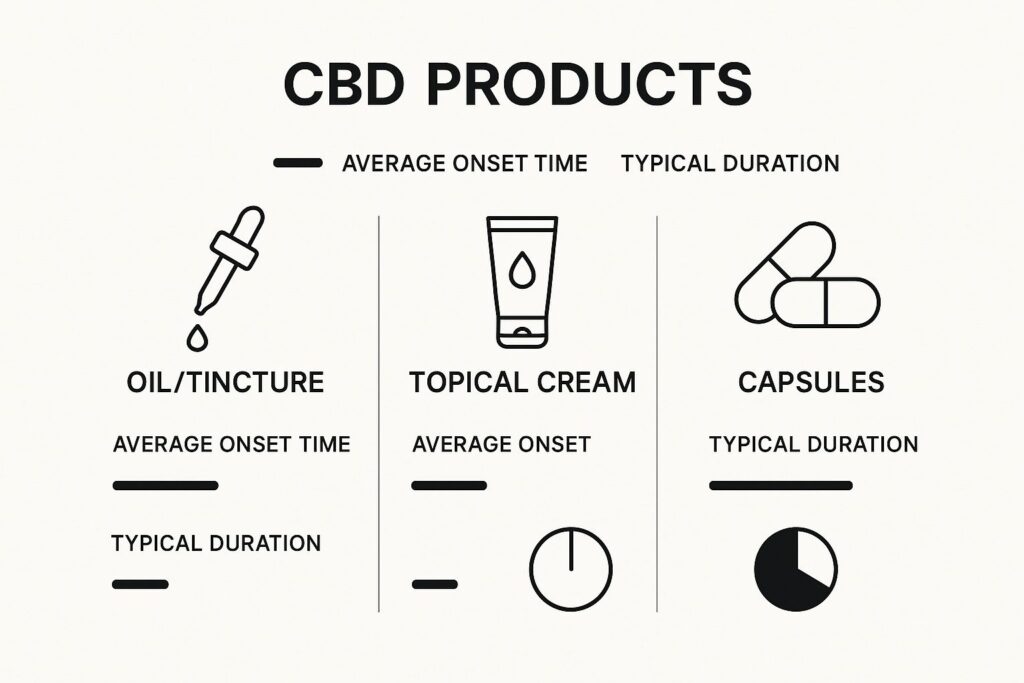
As you can see, topicals and oils tend to work the fastest, while capsules and edibles provide a slower but longer-lasting effect.
A Flavorful Path with Edibles
For those who enjoy a little treat with their wellness routine, CBD edibles are a delicious and discreet option. From vibrant, fruity gummies to rich chocolates, edibles make taking CBD feel less like a chore and more like a moment of self-care. The burst of flavor makes them an innovative and enjoyable way to find relief.
Just like capsules, edibles have to travel through your digestive tract and get processed by your liver before the CBD enters your bloodstream. This means they have the slowest onset time, often taking 60 to 90 minutes to kick in. The trade-off, however, is that the effects tend to last much longer, providing sustained relief that can be perfect for managing persistent, dull aches throughout the day.
Comparing CBD Products for Pain Relief
To make the decision even clearer, this table helps you compare different CBD product formats to find the best fit for your specific pain management needs and lifestyle.
| Product Type | Best For | How It Works | Onset Time | Example Use Case |
| Topicals | Localized pain | Absorbed through the skin to interact with local cannabinoid receptors. | 5-20 mins | Rubbing a cream on a sore knee after exercising. |
| Oils/Tinctures | Fast systemic relief | Absorbed sublingually (under the tongue) directly into the bloodstream. | 15-45 mins | Taking a few drops to manage sudden flare-ups of body-wide discomfort. |
| Capsules | Consistent, all-day support | Ingested and passed through the digestive system for a slow, steady release. | 60-90 mins | Taking one capsule in the morning for chronic, persistent pain. |
| Edibles | Long-lasting, discreet use | Ingested and metabolized by the liver, providing extended effects. | 60-90 mins | Eating a gummy with a burst of fruit flavor to manage dull, nagging aches throughout the workday. |
Ultimately, making the right choice is about matching the product’s characteristics—how fast it works, how long it lasts, and how you take it—to your specific pain and lifestyle. Whether it’s the targeted touch of a cream or the steady support of a daily capsule, there’s a CBD solution designed to meet you where you are.
Finding Your Effective CBD Dosage for Pain
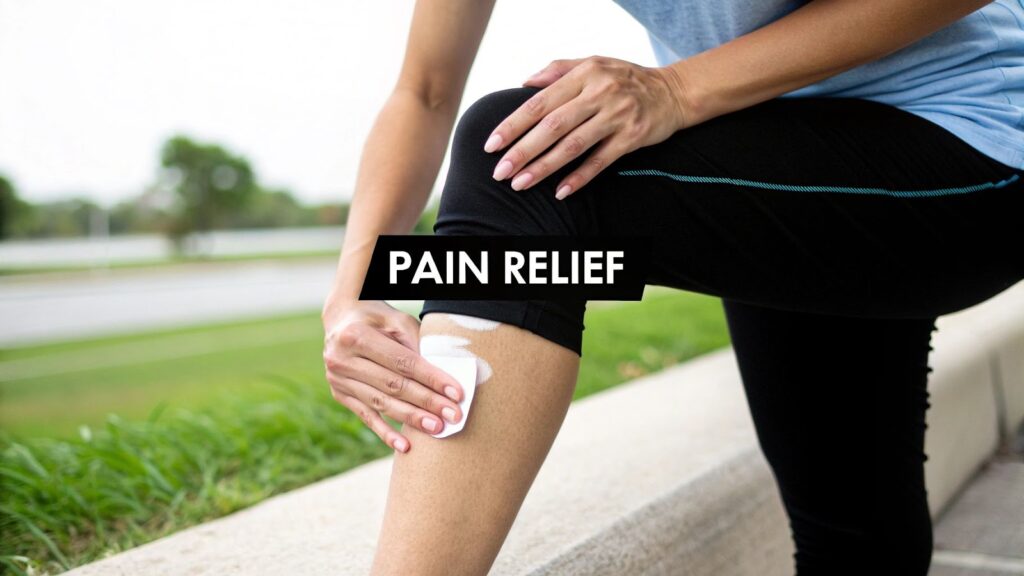
Figuring out the right amount of CBD is one of the most personal parts of the process. There’s no universal dosage chart or magic number. What works wonders for your friend might not do much for you, and that’s completely normal.
Your perfect dose is a unique cocktail mixed from your own body weight, metabolism, the intensity of your pain, and even your individual body chemistry. The type of product you use—be it an oil, capsule, or gummy—also plays a huge role in how much you should take and how you’ll feel it.
The best advice we can offer, and the golden rule in the CBD world, is to “start low and go slow.” This isn’t a race. It’s a journey of listening to your body and discovering exactly what it needs.
Your Step-by-Step Dosing Strategy
Finding your ideal dose is a bit like tuning an old radio. You don’t just crank the dial to full blast. You turn it gently, listening for the static to clear, until you land on that perfect, crisp signal. Your CBD “sweet spot” is the same—it’s the smallest dose that gives you the relief you’re looking for.
Here’s a simple, practical way to find your personal sweet spot:
- Start Small: Begin with a very low dose, like 5 milligrams (mg) of CBD, once or twice a day. This gives your body a gentle introduction and lets you see how you react without overdoing it.
- Be Patient: Stick with that starting dose for at least 3 to 4 days. Consistency is key here. It allows the CBD to build up in your system, giving you a real chance to feel its effects on your pain and overall wellness.
- Listen to Your Body: Pay close attention to how you feel. Maybe even jot down a few notes in a journal. Are you noticing any subtle changes in your pain? Sleeping a little better? Feeling more at ease? This feedback is your most valuable guide.
- Increase Slowly: If you’re not getting the desired results after a few days, it’s time for a tiny adjustment. Increase your daily dose by another 5mg. Keep up this pattern—maintain the new dose for a few days before increasing again—until you hit that sweet spot of relief.
This methodical approach ensures you don’t take more than you need and helps you become an expert on your own body’s response to CBD.
The goal isn’t to take the most CBD; it’s to find the most effective dose for you. For many people, this “sweet spot” is surprisingly low once they take the time to find it.
Product Potency and Your Dose
Reading the label on your CBD product is crucial for getting your dose right. A bottle of CBD oil might be labeled “1500mg,” but that’s the total amount of CBD in the entire bottle, not what’s in a single serving. You need to find the concentration, which is usually listed as “mg per mL.”
For example, a 30mL bottle with 1500mg of CBD has 50mg of CBD per 1mL dropper. Knowing this lets you easily measure out a precise 5mg or 10mg starting dose. If you’re using capsules or edibles, the job is even simpler, as each piece comes with a pre-measured amount of CBD printed right on the package.
Of course, taste can be a factor, especially with oils. Some people don’t mind the natural, earthy flavor, but others find it a bit strong. If you want to make your daily routine a little more enjoyable, learning how to flavor CBD oil is a fantastic way to customize your experience.
Remember, this is a journey of discovery. By starting low, going slow, and paying close attention to your body’s signals, you can safely find the CBD dosage that works for your pain. As always, it’s a good idea to consult a healthcare professional before starting any new supplement, especially if you’re taking other medications.
How to Choose Safe and High-Quality CBD
Diving into the world of CBD can feel a lot like walking into a massive, unfamiliar marketplace. It’s exciting, for sure, but with so many options staring back at you from the shelves, it can also be a bit overwhelming. How do you pick a product that actually works for pain without compromising on safety? It all comes down to knowing what to look for.
First things first, let’s talk about safety. While most people handle CBD just fine, it’s not without potential side effects. Some users report mild issues like fatigue or changes in appetite. More importantly, CBD can interact with certain prescription medications. This is why it’s so important to consult a healthcare professional before you start, especially if you’re managing other health conditions.
Think of it as a simple, proactive step to make sure your experience with CBD for pain management is both positive and safe.
The Golden Rule: Always Check for a Third-Party Lab Test
If you take only one piece of advice, let it be this: never buy a CBD product without a third-party lab test. This isn’t just a nice-to-have; it’s the single most critical indicator of a product’s quality and safety. Reputable brands will proudly display these results, called a Certificate of Analysis (COA), right on their website or via a QR code on the package.
A COA is like an independent inspection report for your CBD. It’s unbiased proof that the ingredients listed on the label are what’s actually inside the product, protecting you from misleading claims and low-quality formulas.
When you pull up a COA, you’re looking for two main things:
- Potency: Does the product really contain the advertised amount of CBD? The COA verifies the exact cannabinoid concentrations, so you know you’re getting what you paid for.
- Purity: Is the product clean? Labs test for contaminants you don’t want in your body, like heavy metals, pesticides, leftover solvents from extraction, and mold.
If a company makes it hard to find their COA, or worse, doesn’t have one at all? That’s a huge red flag. Transparency is everything in this industry, and good companies have nothing to hide.
Understanding Where Your CBD Comes From
The legal side of CBD can seem tricky, but it really just boils down to the plant it was extracted from.
- Hemp-Derived CBD: This is what you’ll find most everywhere. Under federal law, these products are legal as long as they contain less than 0.3% THC—the compound that gets you “high.” This tiny amount is not enough to cause any intoxicating effects, making it perfect for therapeutic use.
- Marijuana-Derived CBD: Extracted from marijuana plants, this type contains much higher levels of THC. Its legality is determined state by state, and it’s generally sold only at licensed dispensaries in places with medical or recreational cannabis laws.
For anyone looking to CBD for pain relief, hemp-derived products are almost always the right choice. They deliver the potential benefits without the high.
It’s clear that people are catching on. The global cannabidiol market was valued at an impressive USD 9.14 billion in 2024 and is expected to skyrocket to USD 22.05 billion by 2030. This explosive growth is a testament to how many people are finding value in these compounds. You can explore the drivers behind the growing CBD market here.
Whether you’re just starting out or are a seasoned CBD user, putting safety first is key. If you’re curious about different ways to use CBD, our guide on CBD vaping for pain management breaks down another popular option. By equipping yourself with this knowledge, you can navigate the market like a pro and find a product that truly fits your needs.
Taking the Next Step Toward Relief
We’ve covered a lot of ground together, haven’t we? From the fascinating science of how CBD interacts with our bodies to the wide world of products and the personal art of finding your perfect dose. You’re now equipped with the core knowledge to confidently seek out the relief you deserve.
Think of this guide not just as information, but as a practical toolkit for your well-being. The biggest takeaway? Managing pain is a deeply personal journey. It’s all about tuning in and listening to what your body needs, whether that’s a soothing topical for an aching knee or a daily capsule to maintain balance. This is why we focus on empowering you with quality products, clear education, and real support.
Let’s Chat In Person
Reading and researching online is a great start, but nothing beats a real, face-to-face conversation with someone who gets it. That’s why our final piece of advice is a simple invitation.
We truly believe the most crucial step is connecting with an expert who can listen. Our team is here to answer your questions, understand what you’re going through, and guide you to the right high-quality CBD for pain management products in our collection.
You don’t have to walk this path alone. Stop by one of our locations in San Antonio, Schertz, or Austin. Let our friendly team help you find exactly what you need to start feeling better. We’re here to make sure you take that next step with total confidence. Find your nearest shop today!
Nicotine is an addictive chemical. Content intended for adults 21+.
Frequently Asked Questions About CBD for Pain
It’s completely normal to have a few questions when you’re exploring CBD for pain relief. We get it. To help you feel confident and clear about your options, we’ve put together answers to some of the most common questions we hear every day.
Will CBD for Pain Make Me Feel High?
Not at all. This is probably the biggest misconception out there, but the answer is a firm no. CBD is non-psychoactive, which means it won’t produce the “high” that people associate with its famous cousin, THC.
By law, hemp-derived CBD products—the kind you’ll find for wellness purposes—must contain less than 0.3% THC. That tiny amount is nowhere near enough to cause any intoxicating effects. You can get the potential benefits without any unwanted mental fuzziness.
You don’t feel a “high” with CBD; instead, you might notice a subtle shift toward calm or balance. It’s more about feeling less of an unwanted sensation, like pain, rather than feeling something new and intense.
How Long Does It Take for CBD to Work?
This really boils down to how you take it. Think of it like sending a package—some delivery methods are built for speed, while others are designed for a slower, more sustained journey. Each product format has its own timeline.
Here’s a quick rundown of what to expect:
- Topicals (Creams & Balms): These are your go-to for fast, targeted relief. They often start working right where you apply them in about 15-30 minutes. Many balms also have a cooling or warming sensation that feels great immediately.
- Oils (Tinctures): When you place a few drops under your tongue, the CBD gets absorbed directly into your bloodstream. This is a pretty fast track, with effects usually kicking in within 15-45 minutes.
- Edibles & Capsules: These have to pass through your digestive system first, so they take a bit longer. You’re looking at an onset time of around 60-90 minutes. The trade-off? The relief often lasts much longer, making them a solid choice for all-day support.
If you’re dealing with chronic pain, consistency is key. Using CBD regularly helps it build up in your system, which can lead to more stable and effective results over the long haul. This principle of consi
Can I Use CBD with My Other Pain Medications?
This is a really important question, and your safety always comes first. It’s essential to consult a healthcare professional before adding CBD to your routine, especially if you’re already taking other medications.
CBD is processed by the liver, and it can sometimes compete with other prescription drugs for the same enzymes. This could change how your body processes your other medications. A medical expert who knows your full health history can give you personalized advice and help ensure everything works together safely.
At Smoke Tokes CBD & Vape, we believe that finding relief starts with feeling confident in your choices. Stop by one of our shops to chat with our team and check out our curated selection of top-tier CBD products. Find your nearest shop today!
Nicotine is an addictive chemical. Content intended for adults 21+.



